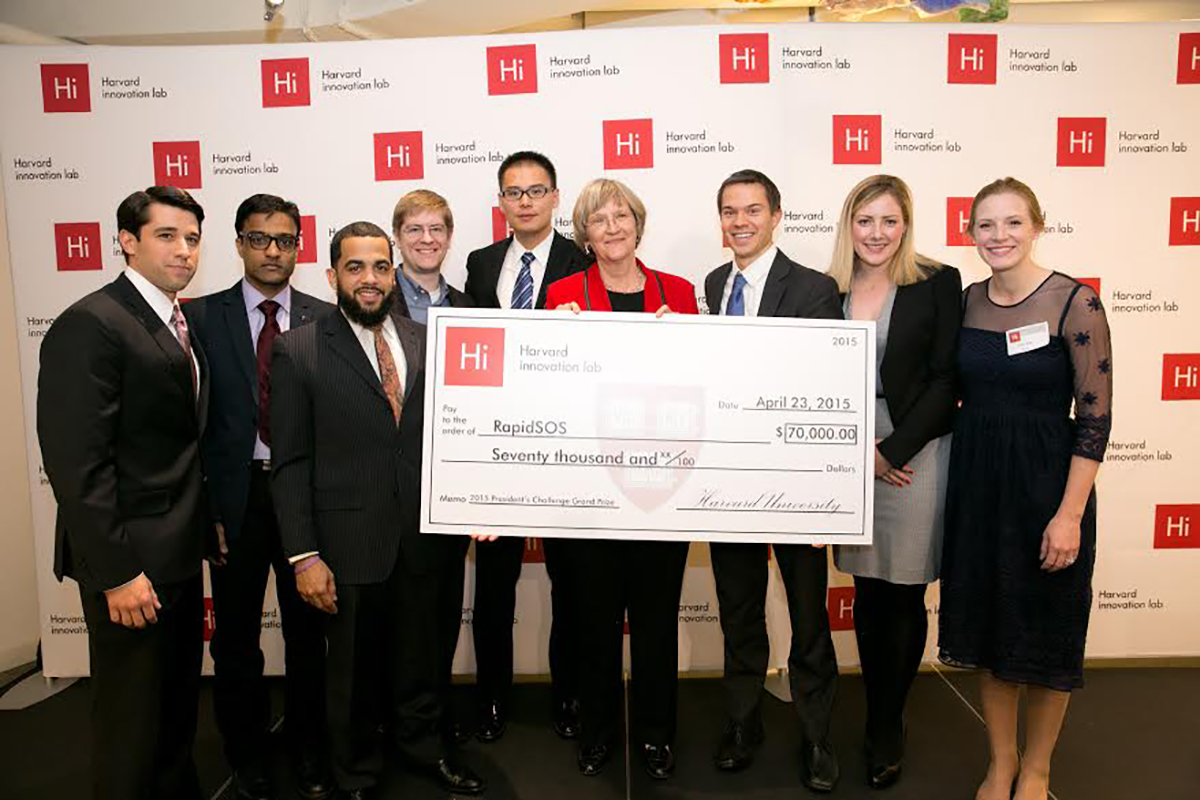New App Connects Individuals with Emergency Services Immediately
After Michael Martin’s father fell off the roof of his home while removing snow, he couldn’t get through to 911 on his cell phone. He was forced to sit in the cold, with a shattered hip and a broken wrist, until Martin’s mother returned two hours later and could call from a landline.
That incident inspired Martin, along with cofounder Nick Horelik, to start RapidSOS, an emergency communication and management system that allows users to get help with the push of a button. “I can push a button and get a car service,” Martin says. “But all the tech we carry around in our pockets, we’re not using it when we need it most.”
Martin, a recent Harvard Business School graduate, met Horelik, an MIT PhD, in 2013 at a Harvard-MIT mixer. The two swapped personal stories, and left that night convinced that 911 technology needed a dramatic upgrade.
To reach that upgrade, they spent two years working with more than 100 dispatch centers worldwide to develop RapidSOS’ first product, One-Touch-911, for which they raised $60,000 on Kickstarter. The emergency communications platform works whether the user has no cell service, is unable to speak, or is unsure of what to report. With one touch, the system sends the precise location, type of emergency, severity of the situation, relevant medical information, and demographic data straight into the closest dispatch center’s existing system.
When asked how the process works, Martin was vague on specifics due to a pending patent. He did note, however, that RapidSOS’ intelligence system actively manages the session between the user and the dispatch center.
RapidSOS is compatible with any three-digit emergency number infrastructure and will work in 135 countries. Each Kickstarter backer has received the app, which the startup expects to launch publicly in the fall. But One-Touch-911 is only the beginning of what the team knows it can accomplish. “This is a technology platform and it enables a host of things,” Martin says. “A lot of real-time data is flowing through our system.”
Aside from its primary 911 focus, the company’s GeoAlert function also allows organizations to select an area affected by an emergency, such as an active shooter, chemical spill, or terrorist attack, and notify everyone within the defined zone. So far, RapidSOS has collaborated with more than 75 universities to create a platform that addresses the needs of campus safety and security.”[For] the average invincible college student, this isn’t front of mind,” Martin says. “But we have a deep interest in protecting our families.”
The team’s next goal is to predict emergencies before they occur—by looking at traffic flow data, road conditions, weather information, and past car accidents—so the app can warn people directly in harm’s way or immediately send assistance to those trapped in a perilous situation.
RapidSOS’ benefits have consistently impressed college business plan competition judges. It received $70,000 from the Harvard President’s Challenge, $50,000 from Harvard Business School’s New Venture Competition, and $15,000 from the MIT $100K Entrepreneurship Competition, among other prizes.
“We are at a point now [where] we are bringing in very meaningful, brand-name investors,” Martin says. “In general, there is this movement of, ‘How can we best capture all the innovation we have to date and tackle big challenges?’ It is solvable using the technology we carry in our pockets.”
The RapidSOS team has also taken on a number of employees internally, growing to 22 people—16 of whom are working out of the Harvard Innovation Lab—and several who “have taken substantial salary cuts,” Martin says, “to roll up their sleeves and be a part of the organization.”
“It really takes a community to build something great,” Martin says. “It’s been a privilege to be in Boston and build this here.”



